Email is an essential part of our daily lives. More than 300 billion emails are sent and received each day globally. While email is an important tool for communication, it can also be a significant source of distraction leading to real productivity loss. Many people have nurtured bad email habits that actually make them less productive. Here, we are discussing some of the most common bad email habits - and how to overcome them.
How Much Do We Use Email?
Email addiction is a very real phenomenon in America, with many people spending hours each day checking and responding to emails.
Statistics show that Americans spend 172 minutes checking their personal email each day, and 149 minutes checking their work email. There’s been a lot of research done about just why that is. In general, digital platforms have allowed people to be hyper-connected and that comes with pressure to be “on” all the time. According to some of the research, this is why people tend to be so obsessed with their email.
- A need for instant gratification - Americans tend to have a need for instant gratification. Social media and streaming have made this urge worse; there are very few things that we need to actually wait for anymore. People have gotten used to the dopamine hit of getting what they need instantly, and email is a big part of that. Email provides an instant sense of feedback or answers, which is appealing to many people. We are accustomed to this in our culture and email is an easy way to satisfy this need.
- Fear of missing out - Nobody wants to feel left out, even virtually. Many people feel that they need to be constantly connected and up-to-date on what’s going on around them. Email provides a way to stay connected and informed, to the point that many people feel anxious when they are unable to check their inbox.
- Pressure to be consistently available - Americans in particular tend to work long hours and allow constant access. There was a point where people worked in their office during set hours and left work there, but those days are over. With laptops, powerful wifi, phones, and other devices at our fingertips, it’s easy to let work bleed into non-working hours. People feel the need to check email constantly and to always be available. That, in turn, can lead to burnout and decreased productivity.
- Anxiety about falling behind - No one likes to feel left behind, and that can happen in a highly competitive work environment. This leads to people feeling that they need to be at the top of their game at all times. Email provides a convenient way to stay connected and informed, and many people feel they are falling behind if they don’t check constantly.
- Ease of use - The fact that email is so convenient fuels the overuse of it. It’s a quick and intuitive way to communicate and many people have become accustomed to using it for all types of communication, both personal and professional. Since it’s so easy, it can naturally become a habit that gets worse over time.
What does this email addiction mean for productivity? Ideally, you would use email to get more done in a day. However, the opposite tends to happen. People not only spend a lot of time actually drafting and sending emails, but lots of time is required to sort and store emails. That additional time spent on email has a negative impact on employees. Not only can it add to stress and anxiety, it actually reduces productivity. Research shows that poor email management can lead to missed client and customer opportunities, losing track of project information, and generally being less productive.
Related Article: How To Cope With Email Overload
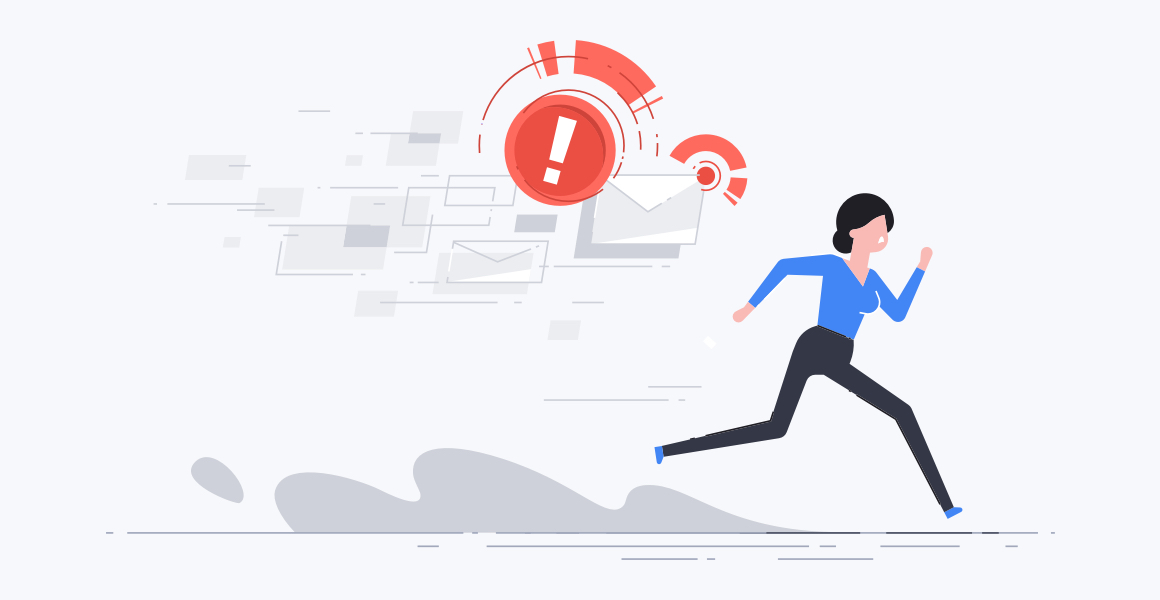
Email Habits that are Hurting You
Since we spend so much time on email, we tend to develop habits. Habits have a compound effect. Things that save effort can increase productivity over time. Habits that waste time become detrimental to your overall productivity. These are some of the most common bad email habits that hurt productivity.
- Checking email too much. Would it be an overstatement to say we are addicted to email? The truth is people tend to check their email compulsively. One of the most common bad email habits is checking email too often. Many email users have developed a habit of constantly checking their inbox, which can be a significant source of distraction and can interrupt their workflow. How can this habit be broken? The simple answer is to check email less frequently, but that tends to be easier said than done. One tactic to try is setting specific times throughout the day to check email, and then avoiding checking it outside of those times.
- Responding to every email right away. It might be hard to believe, but not every email requires your immediate attention. Too many people feel pressure to respond to every email as soon as they get it. While it’s important to respond to critical emails in a timely fashion, responding to every email disrupts your current work and chips away at productivity. You need a system for prioritizing your emails based on importance and urgency. Then you need to commit to only responding to the most crucial immediately. You might try out the Pomodoro Technique, which is a productivity method that helps people to reduce distractions. Or, you could make a commitment to yourself that you will only check email when you’re in a position to do something about it. Looking at emails that have a request or task associated, that you can’t actually get to until later, can be a great source of stress. Many work/life balance experts stress that you should only check email once you are ready to dedicate the proper time to what you find there. And, if you honestly can’t stay away from your inbox for that long, may we suggest checking it once per hour, each hour. Save the last 5 minutes of every given hour to check email and then respond to timely requests and file the others, or flag them for follow up. Note: we didn’t mention going through everything and responding to all of it. This is where you will have to use your judgment in order to make the most of your time.
- Not organizing with filters or folders. If you often think to yourself that your inbox is cluttered and disorganized, then chances are you aren’t taking advantage of all of the email provider’s features. Functionality like folders and folders help users to organize their emails, which ends up being a huge time-saver. Take some time to get acquainted with the systems that your email platform offers, and then set them up. Though it requires some up front work, it’s important to spend time organizing from the get-go: creating a folder system, accurate labels, color-coding, etc. The best way to categorize everything is going to depend on the individual. For example, a marketer may have different folders for each marketing channel like blogs, advertising, and events. Some people set up different folders for “inbound” and “outbound”. Many people keep a folder with email from their boss or other VIPs right at the top of their inbox, and even create rules so that emails are automatically filed there. It’s the first thing they check when they are short on time. Experiment and see what system will work best for you; the key thing is having a system at all. The most critical element is to have a method for prioritizing emails so that you can take action earlier on more urgent items and properly file ones you want to keep.
- Writing emails that are too long. Talk about a productivity killer - for you and the people you send them to! Of course it’s important to be thorough in your communication. On the other hand, writing long emails can be overwhelming and tedious, and time-consuming for your recipients. Try to get right to the point and use bullet points or numbered lists to highlight the most important information. Review and remove unnecessary details whenever possible. In addition to checking the length of your email, consider whether it needs to be sent in the first place. Could you just pick up the phone and have your question answered? Or perhaps shoot a colleague a note on your team’s instant messaging app? Additionally, you’ve no doubt heard the phrase “a meeting that could have been an email”. Those meetings tend to be one of the most annoying parts of work -but the opposite can also be true. If you’re sending an email with complex information, lots of data, or instructions for new processes, make sure that an email format is really the best communication. It might be better to hold a meeting where people can get more visuals and you can answer any questions at the time, rather than kicking off an endless chain of questions and replies. In short, keep your emails concise and to the point, if you need to send them at all.
- Over-copying people. Far too many people have the bad habit of copying too many others on their email. This causes unnecessary clutter in both the recipient’s inbox as well as their own - after all, at least a few people are going to reply. Depending on the content and how often it happens, this can be viewed as downright inconsiderate. Save yourself some time (and everyone’s sanity) by getting rid of this bad habit. Ensure that you only copy the necessary recipients and be judicious about who you include in emails.
- Using email for everything. This somewhat relates to point #4, but you would be surprised how many people tend to use email for everything, even when it’s not the most effective form of communication. Don’t make this a common practice. Instead, before you choose to send an email, consider whether an instant message, phone call, or walk down the hall would be better.
Related Article: How to Organize Your Email Accounts
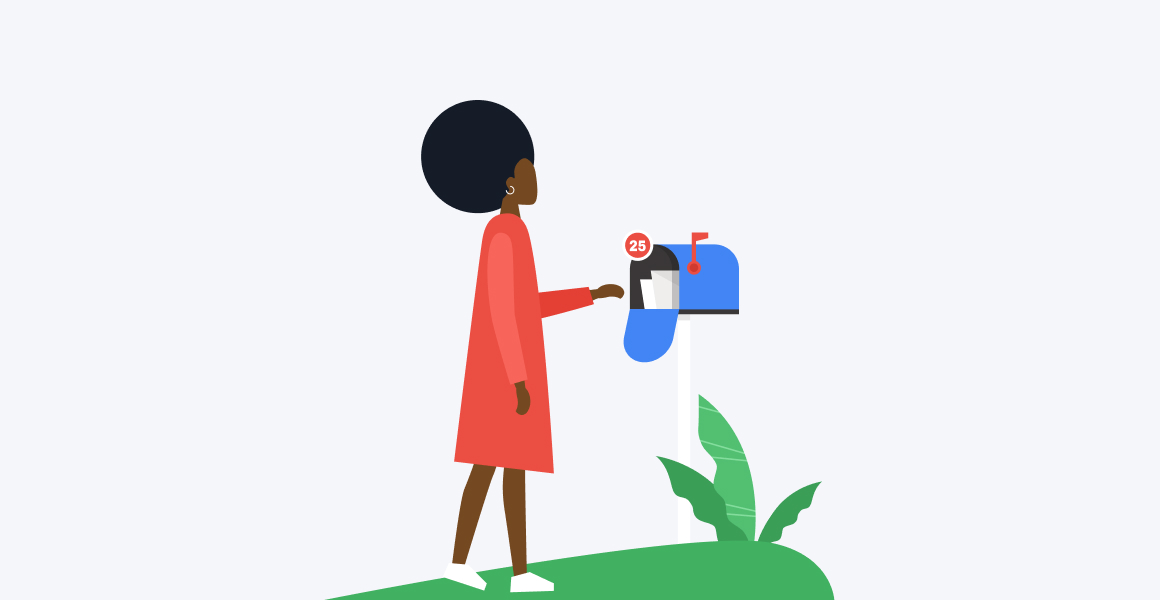
Good Email Habits: Follow These Best Practices Instead
Don’t give into the bad email habits. Instead, make it a point to develop good email practices that will add up to significant time savings and increased productivity. There’s been a lot of research done on smart ways to make the most of email. Try the following:
- Set specific times for checking email. One of the most important email habits for increasing productivity is to set specific times for checking your email. This helps to avoid constant interruptions and distractions throughout the day. Try checking your email only once or twice a day, and avoid checking it outside of these times.
- Use filters and folders to organize emails. Organizing your emails using filters and folders can help to keep your inbox clutter-free and make it easier to find important messages. Set up filters to automatically sort your emails based on sender, subject, or importance. Use folders to store emails that you need to keep but don't need to see every day.
- Keep emails short and to the point. Writing concise and to-the-point emails can save time for both you and the recipient. Keep your emails short and use bullet points or numbered lists to highlight important information. Avoid including unnecessary details that can make emails longer than necessary.
- Use templates for repetitive emails. If you find yourself sending the same type of email repeatedly, consider creating a template. This can save time and ensure consistency in your communication. Customize the template as needed for each recipient.
- Use the subject line effectively. The subject line is the first thing the recipient sees in an email, so it's essential to use it effectively. Use a clear and concise subject line that accurately reflects the content of the email. This can help to avoid confusion and ensure that the recipient knows what the email is about at a glance.
- Avoid multitasking while checking email. Multitasking can be a productivity killer, and this is especially true when checking email. Avoid multitasking while checking your email, as this can lead to mistakes and decrease your productivity. Focus on one task at a time, and give your full attention to each task.
- Avoid sending unnecessary emails. Sending unnecessary emails can clutter up inboxes and waste time for both you and the recipient. Before sending an email, ask yourself if it's necessary and if the recipient really needs to know this information. If not, consider not sending the email.
- Use email signatures effectively. Using an email signature can save time by including important information such as your name, job title, and contact information. This can help recipients quickly identify who the email is from and how to contact you.
- Use the "read receipt" feature sparingly. The "read receipt" feature can be useful for ensuring that your email was received and read by the recipient. However, it can also be intrusive and annoying if used too often. Use this feature sparingly and only when necessary.
Related Article: 5 Simple Tips For Efficient Email Management
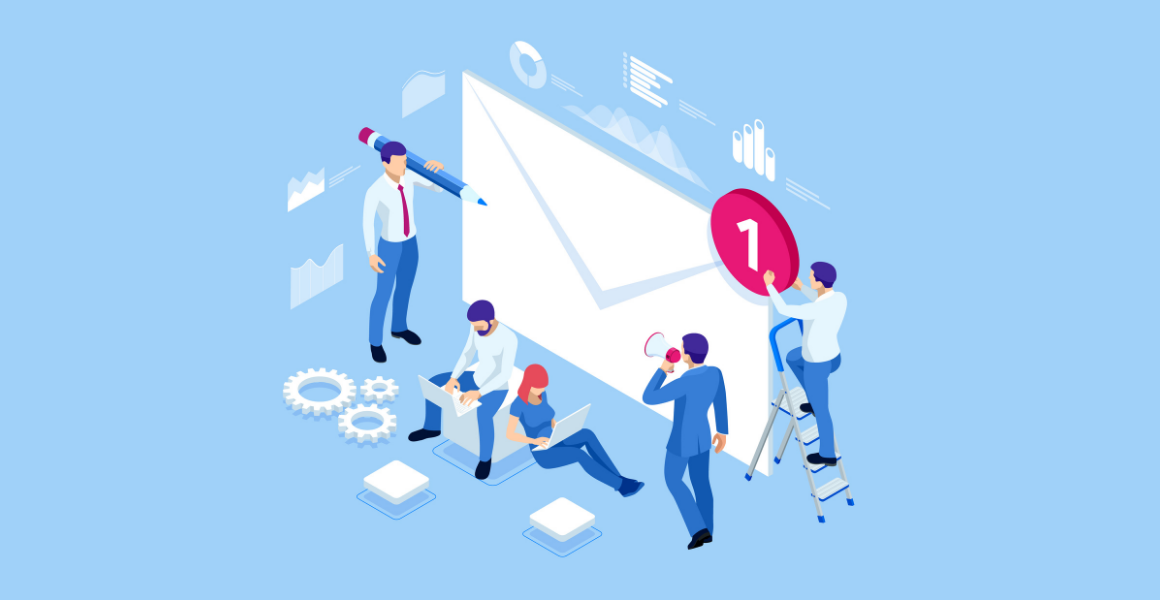
General Productivity Tips
Our hyper-focus on productivity is one of the reasons we end up spending so much time on email. We want to stay connected and make forward motion constantly, which can lead to compulsive checking of email. Ironically, too much time on email actually hurts our productivity. What does the latest research tell us about maximizing productivity? In addition to the tips above about strong email practices, try implementing the following best practices to improve productivity in general.
- Stop multitasking - Juggling several tasks at once rarely leads to optimal outcomes. Focus on a single task at a time and give it your best effort.
- Set smaller goals - Large projects can often feel overwhelming, so breaking them into smaller phases will be helpful. Create momentum by choosing manageable tasks that you can do effectively and well.
- Take breaks - Many people equate resting with being less productive, but the opposite is true. Many highly successful people are sure to get the sleep they need, and pause their efforts when they feel overwhelmed. It’s important to give yourself time to enjoy your life, and step away from work so that you can return with renewed focus.
- Implement a “five minute” rule - Many people struggle with procrastination. However, if you can commit to yourself that you’ll only spend “five minutes” (or whatever time you decide) on a task, you’ll be less likely to put it off. When you feel like procrastinating, set a timer for the work to be done, and stop when it goes off.
- Try time blocking - Using time blocks is a well-known productivity strategy. When you create time-block periods in your day, you are making a conscious decision of how to spend your time. Try 60 or 90 minute time blocks, and you may want to color code or develop a printed system as well.
Related Article: How to Manage Multiple Email Accounts
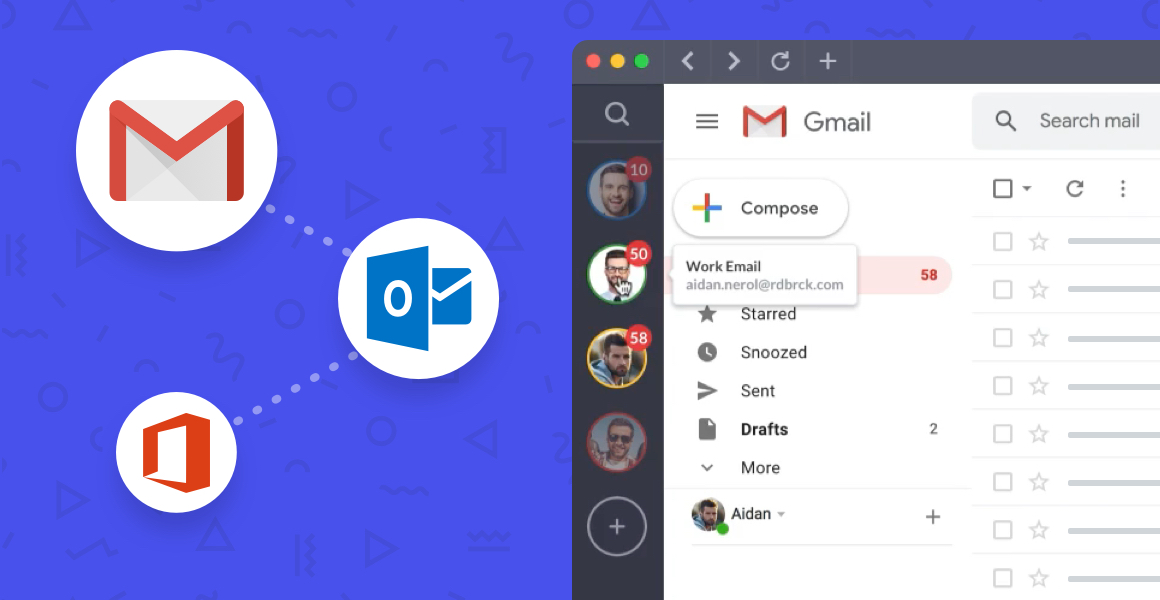
Use Shift to Help With Email Management
The tips we just mentioned are great, and can make a difference in getting more organized with email. However, they are really just addressing a symptom of a bigger issue. It would really be helpful if there was a better way altogether to streamline email messages and deal with them in the ways that are best for your working style. That’s where Shift comes in.
Shift offers notification management that can apply across all the apps you use every day, from Outlook to Facebook to Slack and beyond. With a couple of clicks, you can mute all notifications temporarily or control the sounds that play when a notification comes through. This means you won’t constantly be interrupted by new message notifications. The old principle “out of sight, out of mind” is often repeated for a reason: because not continuously getting reminders of email piling up will allow you to focus on the tasks at-hand.
Not only that,
Shift brings together all of the notifications from any of your apps and email accounts and displays them in one place. You don’t have to look in multiple places anymore just to see what new alerts you have. Instead, you can simply check the number that appears in the little red bubble on the Shift icon in your taskbar, and there you go! This is truly the easiest way to avoid overload from email notifications. Users save a ton of time that previously was wasted by constantly checking their latest email notification and digging into their inboxes. Not only that, you can even turn off notifications or remove the notification badge for particular apps within Shift if you don’t want to be alerted to things within that particular platform. This is particularly helpful for drawing boundaries around your email work and only checking email on a proactive - rather than reactive - basis.
Furthermore, a platform like Shift will make sure you have
all your apps in one place. As you go through the process of linking your favorite tools, you’ll see software and apps that you don’t use anymore. As you deactivate and delete those tools, you’ll lose any notifications that went with those services. It’s not only streamlining your entire desktop, but you’re deleting time-sinks in the process.
Related Article: How to Get an Email Aggregator App for Desktop
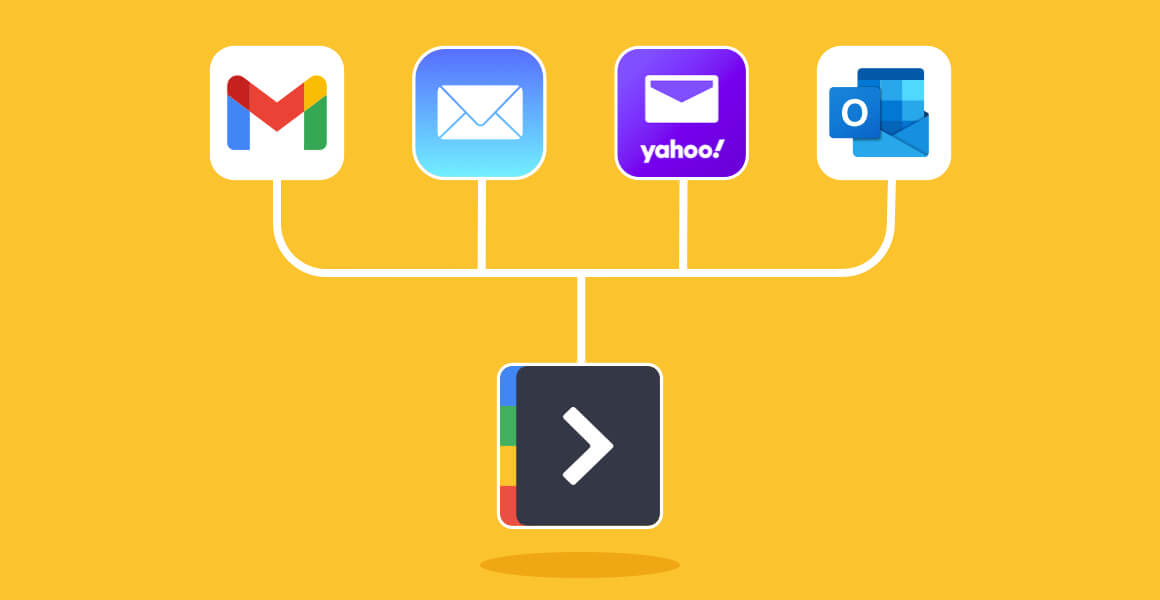
How Else Can Shift Help With Productivity?
Shift is a powerful tool for people who are trying to work more productively in their desktop environment. Anyone who uses online platforms will find Shift to be a valuable resource. With Shift, you can organize and manage the following:
- Mail - Connect all of your Gmail, Outlook, and Office 365 accounts and manage everything from one centralized workstation.
- Apps - WhatsApp, Slack, Messenger—we have everything you need to get it done. Browse our Apps Directory, connect yours, and switch between them easily.
- Search - Save time and find exactly what you're looking for across any of your Mail, Calendar, and Drive accounts.
- Chrome extensions - Enjoy access to Boomerang, Grammarly, LastPass, and many of your other favorite Chrome Extensions.
- Focused web tabs - Access the web from inside Shift. Manage your tabs and organize them by account for a better browsing experience.
- Workspaces - Create a Workspace with the exact apps, tabs, and bookmarks you need, then share it with your team to get the job done.
- Account management - Toggle between your most-used accounts, check notifications and streamline your workflow.
For more insights on productivity and getting organized, visit Shift’s
Knowledge Base or sign up for our info-packed newsletter, “
The Week Ahead”.




















 Share on Facebook
Share on Facebook Share on Twitter
Share on Twitter







